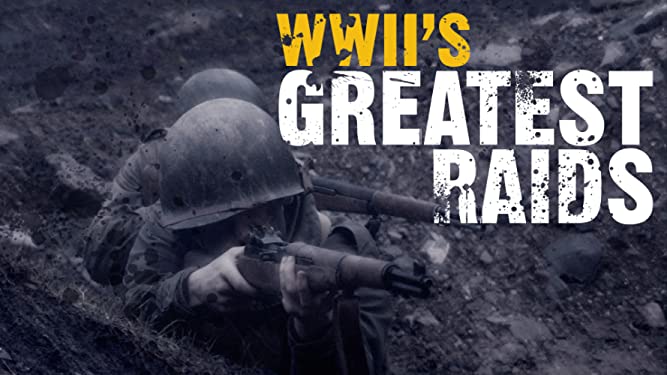Great Raids of World War II episode 5 – Cockleshell Raiders: The French port of Bordeaux was vital to Hitler’s war machine. Through it came many of the vital raw materials from the Far East essential to keep the Nazi armies fighting. But Bordeaux was 90 miles up the heavily-guarded Gironde river and seemingly unassailable. Then Royal Marine Major ‘Blondie’ Hasler came up with the idea of a sending a special raiding force in canoes.
Operation Frankton was a World War II commando raid carried out by the Royal Marines Boom Patrol Detachment (RMBPD) on shipping in the German-occupied French port of Bordeaux. The operation was conducted in December 1942 and was intended to disrupt German shipping activity in the Bay of Bordeaux. The RMBPD was composed of twelve Royal Marines, led by Major Herbert “Blondie” Hasler. The marines were trained in the use of collapsible canoe, which they used to infiltrate the harbor and attack German ships. They paddled up the Gironde Estuary and entered the harbor at Bordeaux on the night of 7 December 1942.
Despite facing difficult conditions and heavy enemy fire, the marines managed to attack and damage several ships before they were captured or killed. Two of the marines, Corporal Bill Sparks and Marine Dick Raikes, managed to escape and were eventually rescued by the French Resistance. The raid was a significant propaganda victory for the Allies, but it came at a high cost, with six of the twelve marines killed in action and two captured and executed by the Germans. The bravery and determination of the marines involved in Operation Frankton has been recognized with numerous awards, including several Victoria Crosses.
World War II was the greatest military confrontation the world has ever known. On land and sea and in the air the scale of the conflict was unprecedented. But amid the great campaigns were many smaller-scale operations which were vital to Allied success – occasions when small numbers of men could have an effect out of all proportion to their numbers; occasions when the course of the war hinged on their courage and daring.
This series looks at six such raids. With the use of veterans’ accounts; carefully researched archive film; meticulous reconstructions and 3-D graphics the viewer is put right into the heart of the action – whether it was foiling Hitler’s attempts to acquire an atomic bomb, or discovering the secrets of the air defences of the Nazi Reich. The recreated raids include the British and Norwegian mission to smash Hitler’s nuclear programme; the canoe-borne commando assault on Bordeaux to disrupt supplies of raw materials essential for Hitler’s war machine; and the paratroop capture of a key German radar installation at Bruneval, which brought back information vital to enable Britain’s bombers to strike at the heart of Nazi Germany. All six episodes from the series are included on this set.
Great Raids of World War II episode 5 – Cockleshell Raiders
Operation Frankton
Operation Frankton was a commando raid on ships in the German occupied French port of Bordeaux in southwest France during the Second World War. The raid was carried out by a small unit of Royal Marines known as the Royal Marines Boom Patrol Detachment (RMBPD), part of Combined Operations inserted by HMS Tuna captained by Lieutenant-Commander Dick Raikes who, earlier, had been awarded the DSO for operations while in command of the submarine HMS Seawolf (47S). (The RMBPD would later form the Special Boat Service.)
The plan was for six folding kayaks to be taken to the area of the Gironde estuary by submarine. Twelve men would then paddle by night to Bordeaux. On arrival they would attack the docked cargo ships with limpet mines and then escape overland to Spain. Men from no.1 section were selected for the raid; including the commanding officer, Herbert ‘Blondie’ Hasler, and with the reserve Marine Colley the team numbered thirteen in total. One kayak was damaged while being deployed from the submarine, and it and its crew therefore could not take part in the mission. Only two of the 10 men who launched from the submarine survived the raid: Hasler, and his number two in the kayak, Bill Sparks. Of the other eight, six were executed by the Germans and two died from hypothermia.




